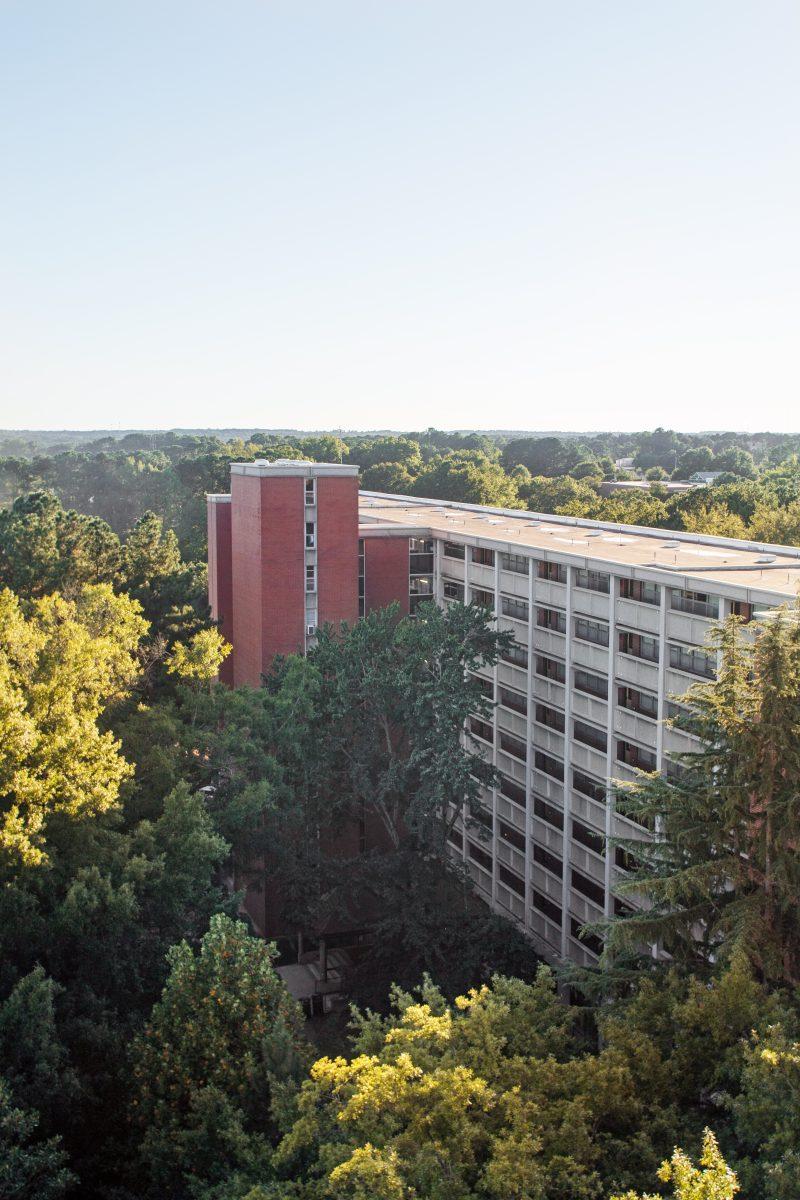NC State’s first-year live-on requirement was discussed for at least the past decade and despite the 300 first-year students moved to University Towers this year, University Housing expects to continue the requirement.
The majority of NC State’s peer institutions had implemented a live-on requirement prior to NC State, including nine Atlantic Coast Conference and 10 University of North Carolina System universities.
“This is not a new concept: this has been talked about at NC State for over a decade, well before I got here,” said Vice Chancellor and Dean of Academic and Student Affairs Mike Mullen.
NC State first seriously considered the live-on requirement in the fall of 2015. Mullen proposed that University Housing investigate the climate for a live-on requirement at NC State and its peer institutions.
According to the investigation, from 2011 to 2015, University Housing accommodated an increasing percentage of students, even as the number of first-year students was decreasing. This plateaued at 78 percent of incoming 4,500 students, or approximately 3,500 students, in fall 2014.
“As we have focused more on student success, we’ve tried to reduce class size to promote quality, not quantity for freshmen,” Mullen said. “…That led to this year trying to bump up the number of incoming freshmen.”
Director of University Housing Susan Grant conducted focus groups in 2016 with student leaders from the Avent Ferry Complex and the Inter-Residence Council to assess student attitudes toward on-campus living and a live-on requirement. Emily Lambeth, a third-year studying biomedical engineering and the current president of the IRC, was present during Grant’s IRC focus group.
“She explained what was going on and how it worked, because a lot of us had never heard of a first-year live on campus requirement,” Lambeth said. “I think Susan presented it very thoroughly… it felt like it was something that students want.”
The primary concern from the interviewed students was decreasing the number of upperclassmen in the residence halls and upperclassmen representatives in the IRC, according to Grant and Lambeth.
“We don’t want to exclude upperclassmen from our residence halls — you should have a good mix,” Mullen said. “We don’t want a situation where it’s all freshmen in a hall by themselves because upperclassmen provide leadership.”
Lambeth maintained that in most cases, upperclassmen are mostly able to remain in living and learning villages. However, the number of upperclassmen in on-campus housing will decrease to accommodate more first-year students next year, according to Mullen.
For Lambeth, the IRC’s role in assessing and shaping the live-on requirement was in a purely advisory role by advocating on behalf of students, while other members of the IRC may have participated in planning committees under Student Government.
“The thing was that it wasn’t Housing making this policy — it was coming from the chancellor,” Lambeth said. “…We served as an advisory committee: we did advise and assist with giving feedback.”
Concerns have been raised by private housing regarding their ability to fill vacancies with nearly 500 fewer students living off campus each year due to the live-on requirement, according to Mullen.
“I interact with the Hillsborough Street Community Service Corporation which helps promote business on the Hillsborough Street Corner,” Mullen said. “I have heard of no negative impact this year. There were concerns back in ‘15 and ‘16. There are one or two complexes that have had vacancy concerns.”
Mullen expects there to be a ‘pyramid effect,’ in University Housing in the coming year, with first-year student housing prioritized. He expects that first-year students will not have to live in private accommodations as they did this year in University Towers.
“The only consequence from my perspective is that we’ll allocate more beds next year for freshmen,” Mullen said. “We’ll have to do a better job of informing returning juniors and seniors of the dynamics: to know that if you haven’t applied by February ‘x,’ you may not receive housing. Somewhere between 40 and 50 percent of rising sophomores usually want to return to campus housing.”
According to Mullen, figures and trends will not be available regarding the impact of the first-year live-on requirement on first-year retention and graduation for several years. Mullen believes the process was a “little bit bumpier” than what he would have liked to seen. Mullen declined to comment on the impact of the requirement on first-year student success at NC State.
In the coming weeks, Lambeth expects that a student representative of University Towers may step forward to join the IRC, and her organization continues to advocate on behalf of the students living there under University Housing. To voice perspectives of the live-on requirement, students and community members may contact University Housing at their email, housing@ncsu.edu or their respective IRC student representatives.








